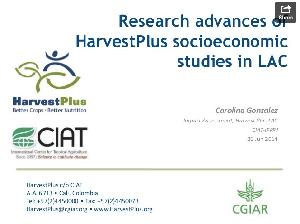Utilización de la tierra
AGROVOC URI:
Nutrient management and spatial variability of soil across scales and settlement schemes in Zimbabwe. Thesis (Ph.D.)
Our forest, our decision: a survey of principles for local decision-making in Malinau
Many people want to improve the governance of forest areas, yet what is considered good governance is not necessarily self-evident or agreed upon by everyone. This study demonstrates the diversity of views held by communities and government officials in Malinau, Indonesian Borneo about what they consider to be good governance. Each group described how they thought decisions about forests should be made, including how to represent interests, allocate land rights, distribute cash benefits from forests, share information and manage forests.
Ostrich-like strategies in Sahelian sands?: land and water grabbing in the Office du Niger, Mali.
In recent years, large-scale agricultural investment projects have increased in sub-Saharan Africa as a result of the growing appetites of local and international investors for land resources. Research has so far mainly focused on land issues, but the water implications of these land deals are starting to surface. Taking the Office du Niger (ON), in Mali, as a case study, it is shown that while around 100,000 ha is currently being cultivated, mostly by smallholders, a total of 600,000 ha of land has been allocated in the past ten years to investors in large-scale farming.
Potential land use competition from first-generation biofuel expansion in developing countries
Potential impact of road projects on habitat loss and greenhouse gas emissions in Guyana from 2012 to 2022
Potentials and constraints of little bag silage in Honduras
Priorities for Vietnam agriculture: similarities and differences with the region
Research Areas and CRPs for CIAT Asia
Research advances of HarvestPlus socioeconomic studies in LAC
The socioeconomic area of HarvestPlus LAC seeks to generate information to guide the decision related to biofortified crops in the region. The idea of this seminar is to present advances made in three socioeconomic studies: a. Potential departments/regions for an intervention with biofortified crops (cassava, rice, beans and maize) in Colombia; b. Adoption, consumption and commercialization of improved rice varieties in Bolivia and c. Preliminary results of a consumer acceptance of a High Iron Bean variety (Super Chiva) in Guatemala.
Secondary forests in swidden agriculture inthe highlands of Thailand
Swidden farming is the main agent of conversion of primary forests to secondary forests in the highlands of mainland Southeast Asia, but there is a deterioration and decline of the practice with land use intensification. The population growth in northern Thailand has forced lowland farmers practising permanent wet rice cultivation to turn to short rotation swidden in the foot hill zone. Highland swidden agriculturists are adopting more intensive forms of swidden or are shifting to permanent farming.





